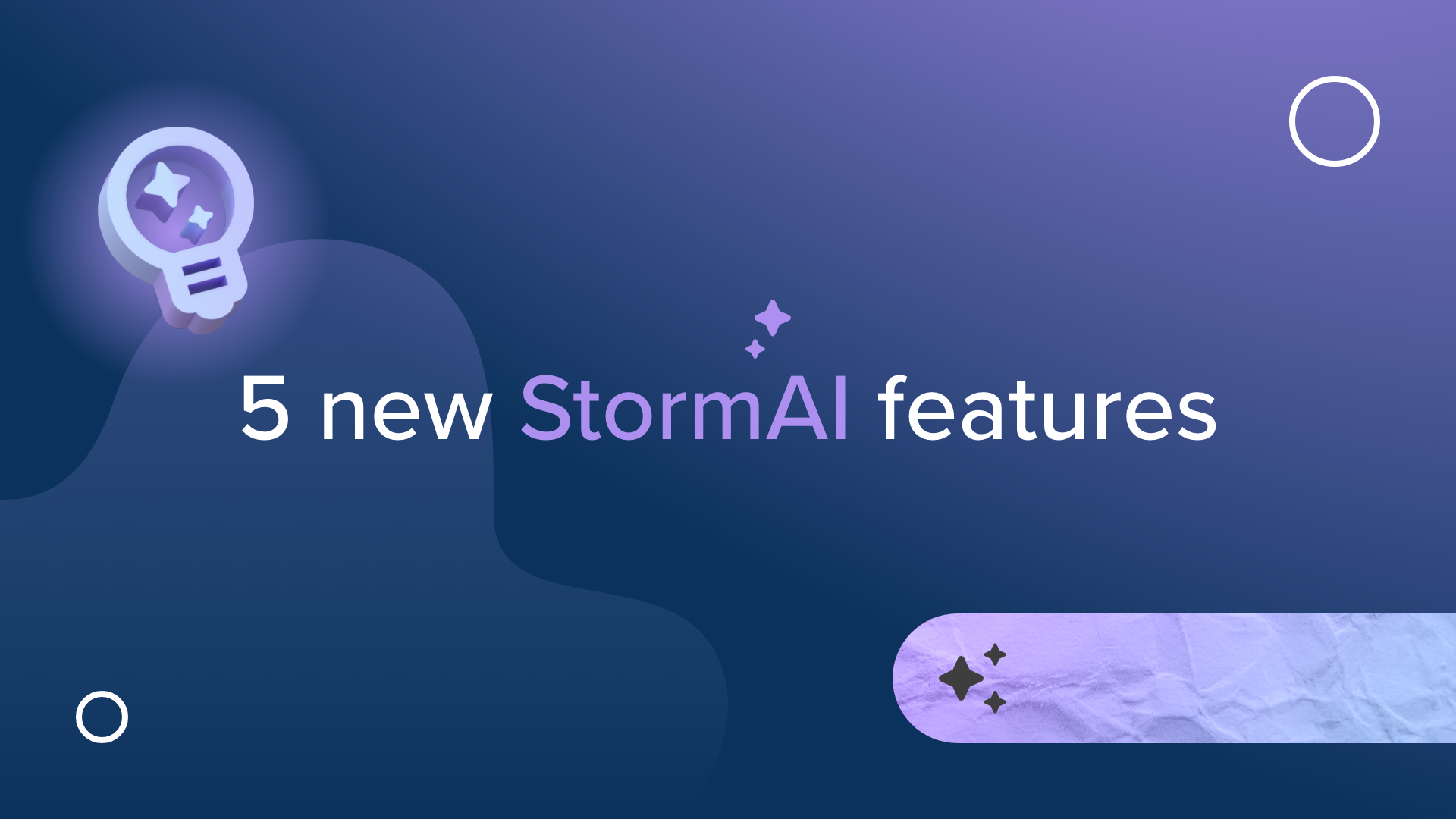A Beginner’s Guide to Agile Retrospective Meetings
A retrospective meeting (or retrospective sprint as it is sometimes called) is a step in the agile model that allows teams to take an overall look at what they have done over a period of time — two weeks, a month, etc. — to determine what's working for them and what's not.
Note that even though a retrospective is technically part of the agile framework, anyone can integrate a retrospective meeting into their workflow! The process helps you improve problem-solving, get tasks done quicker, and allow for everyone's ideas to be shared. "A great retro is one where everyone's voices are heard equally." (source).
The retrospective meeting in agile, often moderated by the designated Scrum Master (aka agile team manager or leader), is a great way to focus meetings on continual process improvements. Traditional agile retrospective meeting tools like a whiteboard and sticky notes allow team members to brainstorm ideas about how to get things done more efficiently.
How do you conduct a Retrospective?
Assemble your scrum team for a collaboration meeting. Whether in-person or virtual, your goal is to collaboratively discuss how your last sprint (known as a Project Increment) went.
Prepare a virtual or physical whiteboard to document your ideas, solutions, and decisions. Some teams may prefer to kick off their retrospective ceremony with an icebreaker to set the tone and get everyone primed to reflect and problem-solve.
While a retrospective can be conducted in different ways, one of the most commonly used formats is the Start, Stop, and Continue method (source). Just as the title suggests, this format allows teams to write down and verbalize ideas about what they want to start doing, stop doing, and keep in their workflow.
Once everyone's ideas are up on the board, the team can vote and decide on the most important areas of improvement to move forward with, as well as what can be saved for later.
The Start, Stop, and Continue is a great way to perform your first retrospective. However, there are a variety of formats that can be used to make it work best for your team (discussed later). It's a flexible way to take your meetings, particularly remote meetings, to the next level.
What should you Start, Stop and Continue Doing?
Quickly identify areas for improvement in your project process and make meaningful changes to help you sprint faster.
Get Started for Free
How to Have Successful Retrospective Meetings
Come prepared
Like with most collaborations, preparing in advance can set you up for a level of predictability and better outcomes. Save yourself time by preparing a meeting agenda with some talking points. You might go one step beyond this and collect process feedback from your team in advance.
While retrospectives always reflect your most recent work, they are meant to happen incrementally. Make sure your team knows what to expect, your expectations for them, and that they come prepared for an open discussion.
Start with your goals
Ultimately, the retrospective meeting is perfect for improving processes, making workflows feel smoother, and (ideally) making goals more achievable. With a straightforward retrospective meeting template, it's easy to get an entire team to align their goals toward ideas that will move their projects forward.
Make sharing easy
Some meetings can lead to people talking over one another, and ideas not being properly heard. Some on your team might naturally be on the quieter side or feel uncomfortable speaking up for any number of reasons. Still, those team members likely have valid and helpful feedback that can make solid improvements in the long run.
Encourage equal opportunity to share ideas, no matter how small. Use a round-robin system to make sure everyone has a say. Sharing an idea on an organized board (virtual or otherwise) is fast, to the point, and keeps everyone moving in the same direction.
Document meeting outcomes
Document your session and make it easy to recall later. If done on a digital platform like Stormboard, you can save all of your team's work in one secure place. Recording ideas is the best way to track decisions and ongoing items. That way, there will be no confusion during future retrospective meetings, and teams will not have to waste time reviewing things that have already been discussed.
Action actionable items
Sadly, in some retrospective meetings, teams find areas for improvement but don't make those discussions into concrete action items. Because retrospectives are meant to be a springboard for continuous improvement, without any clear plans to address issues , any inefficiencies stay with you.
Change what you say you will. Designate people to own those changes and ensure they happen.
How to use Stormboard to perform a Retrospective
While traditional retrospective meetings can be a good way to increase productivity, it can be improved even further by using Stormboard’s virtual collaboration space.
Your scrum team can log in individually or share a view of the virtual whiteboard. No matter where they are, they can add ideas and participate in the conversation in real time or asynchronously with the entire team. It's like having a video call, where collaborative work actually gets done.
Prepare your workspace in advance with any of Stormboard's retro templates or create your own. You can read more about how to use these templates in this helpful article. Team members can then vote on ideas in the Storm (what we call your digital meeting space), making it easy to see which ideas should be acted upon.
Meeting minutes and presentations can be created, saved, and exported using Stormboard's Reporting feature for an executive-ready report or editable file.
Stormboard’s Retrospective Templates
Retrospective Basic
This template is our version of the Start, Stop, and Continue method. It includes three sections:
Stop doing this
Start doing this
Continue doing this
The three sections make it easy for your team to make decisions based on the end of the Agile process.
If you like a simple template like the basic one, try out the Rose, Bud, and Thorn template.
Retrospective 6 Sections
This has template six sections.:
More
Less
Same
Frustrating
Enjoyable
Puzzling
It expands on the basic retrospective format by giving more specific sections to explore. This template is great for teams with a lot to discuss and need to delve deeper into their ideas.
KALM Retrospective
KALM stands for Keep, Add, More, and Less.
With the four sections included, this template lets teams pick what ideas to:
Keep
Add
See more of
See less of
If you like this framework, test the 4Ls Template (Liked, Learned, Lacked, and Longed For).
Simple Retrospective
This template is similar in design to the basic, but even more simplified.
Two sections are included in this template, ‘Stop doing this’ and ‘Start doing this’. It’s as easy as it gets for your team to break ideas down.
Project Lessons Learned
Use the Project Lessons Learned Template to review which processes or tasks from your project were successful, which didn’t perform as well as you had hoped, and which could be improved in your overall project development.
The template is divided into four sections:
What went right
What went wrong
What we can improve
What we can take away
With various templates, customization, and accessibility, Stormboard makes switching over to a virtual Retrospective approach as seamless as possible for your team, no matter how many people are involved.
Retrospective meetings are a chance for teams to reflect on their work and identify areas for improvement. Remember, they can be used by anyone, not just agile teams, to improve your workflow and achieve your goals.
Guide: How to Overcome Hybrid Workforce Challenges
Remote work impacts teams - but that doesn't have to be a negative impact. See and overcome the 3 most common remote work challenges dispersed teams face.
Get the Guide
Originally posted Sep.28,2020
*Updated Jul.2,2024












